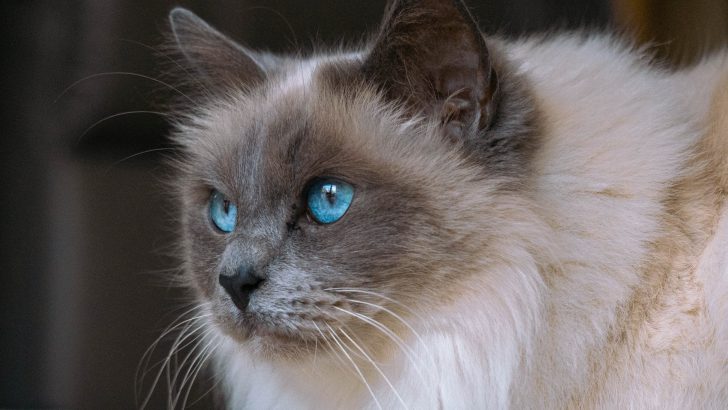These beautiful, fluffy babies are impossible to resist. They have one feature that makes them even more special, though – their piercing eyes. You can easily get lost in them! But, do all Ragdolls have blue eyes?
With their long soft coats, wonderful purrsonalities, and irresistible eyes, it’s no surprise that Ragdolls are one of the most loved cat breeds out there. Every single one of their features is simply breathtaking.
Not only are their giant-shaped friendly fluffs, but they also have a soft and silky coat that you wish to cuddle all day long. Let me sign up for that!
They are large, purebred cats that are known for being extremely gentle and affectionate. Their size often fools people, as they’re one of the friendliest and cuddliest kitties you can get. A giant-sized lap cat with soft and silky fur? Sounds perfect to us!
Although they have long coats, they’re considered pretty easy to take care of, and they get along ideally with children and other animals. They absolutely love spending time with their families. Plus, they have a pretty low prey drive, which means they’re perfect indoor fur babies.
On top of their outstanding character – they’re breathtakingly beautiful. This is why a lot of people can’t resist blessing their lives with a Ragdoll kitten. Let’s learn more about their striking eyes, and if they come in any other color.
Do all Ragdolls have blue eyes?

We know it’s one of their most unique features, but do all Ragdolls have blue eyes? The short answer is yes.
All traditional Ragdoll kitties are blessed with distinctive piercing blue eyes we love so much. According to The International Cat Association (TICA), a Ragdoll kitty must have blue eyes to be considered purebred.
So, if your giant ball of fluff is a purebred – she’ll most likely have blue eyes. Since their creation in the 1960s, their eyes have been their defining characteristic. These soft giants were bred for beauty, but their eyes haven’t always been passed down through generations.
For some time, Ragdolls were crossed with other breeds. As a result, we have our beautiful fluffs today, and some of them don’t have the blue-eyed gene.
Although all the traditional Ragdolls have blue eyes, the shade varies in intensity, from dark navy to pale blue. It can sometimes even depend on their color pattern. However, there are some exceptions depending on the type of Ragdoll you have.
Ragdoll eye color and coat pattern
I know we’ve stated that all Ragdoll cats have blue eyes, but there are some mixed feelings about Mink and Sepia Ragdoll kitties. They’re seen as controversial in the Ragdoll community because they don’t have blue eyes. Since TICA states that no other color is possible, that’s where the opinions divide.
Don’t get us wrong, Mink and Sepia are not some new breeds or color variations of Ragdoll cats. They can be traced back to the first ones bred by Ann Baker. Let’s see what’s specific about them.
1. Traditional Ragdoll cats
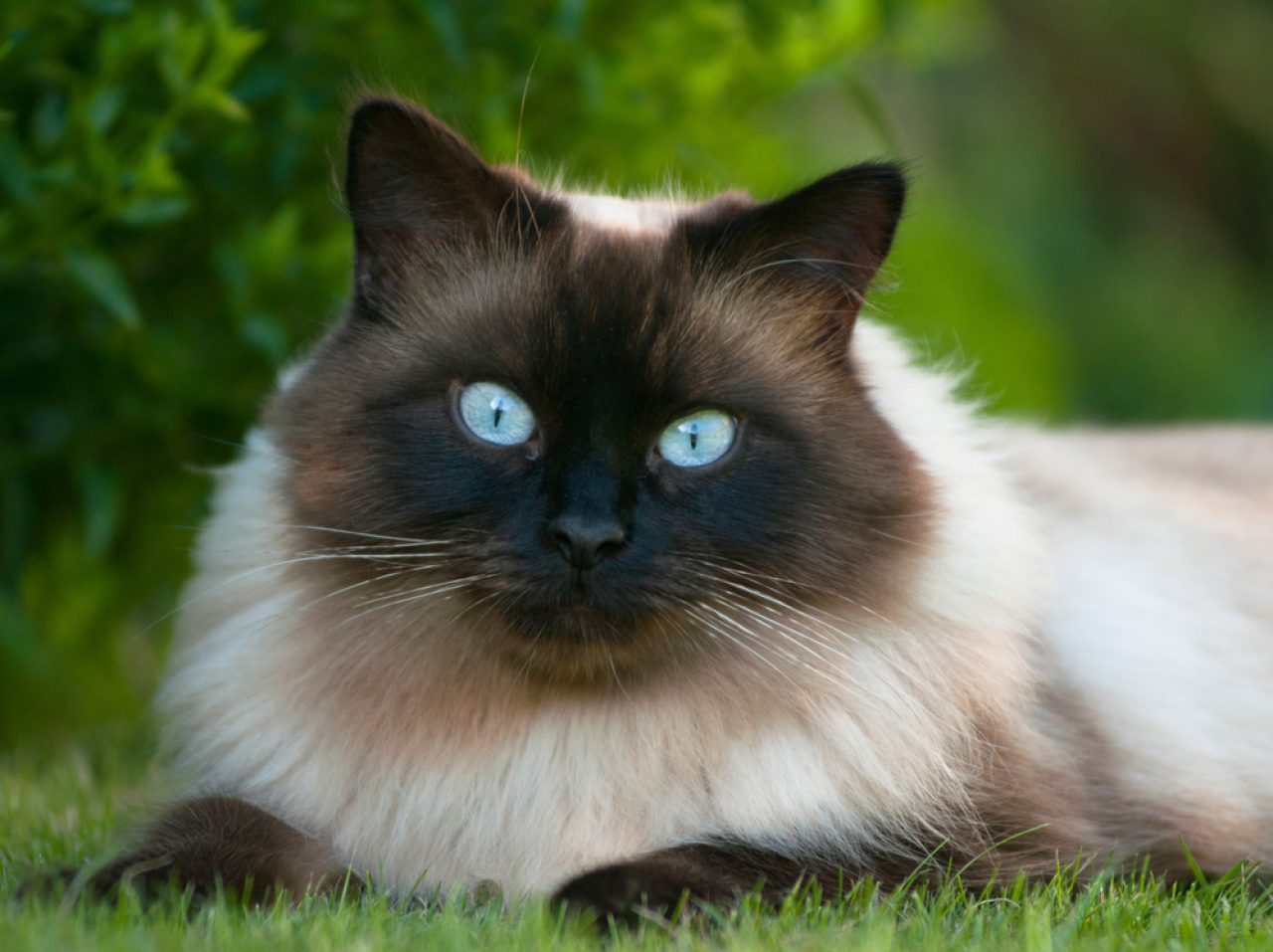
This type of Ragdoll kitty has a light-colored tail with darker points. Their extremities are usually darker, including their ears, tail, paws, and face. If you’re wondering do all Ragdolls have blue eyes, you’ve probably had these furbabies in mind, considering they’re the most common ones.
If you’re thinking of getting a traditional Ragdoll with these markings, she’ll probably have their typical piercing blue eyes. They’re the “standard” type of Ragdoll feline and they always have their characteristic eyes.
2. Mink Ragdolls
There’s a slight difference between traditional Ragdolls and Mink ones. These beauties come from an early Ragdoll bloodline, and they have coats that are much silkier and lusher than it’s the case with traditional variety. Their coats can also be fuller and longer, making them extra fluffy.
Although their eyes can also be blue, some Mink Ragdolls also have green or deep blue ones. And we thought they couldn’t be more unique…
3. Sepia Ragdolls
Sepia Ragdolls are unique in their own way. Not only can their eyes be blue, green, gold, hazel, brow, or aqua, but they also have a coat that changes colors! This variety of Ragdolls has a wonderful lush coat that darkens as the kitty ages, although it’s pretty similar to the traditional one.
If your fluff is still a kitten, you might have to wait up to 3 months to see what color her eyes turn out to be. It’s your own little fluffy mystery.
Do Ragdoll’s kittens’ eyes change color?
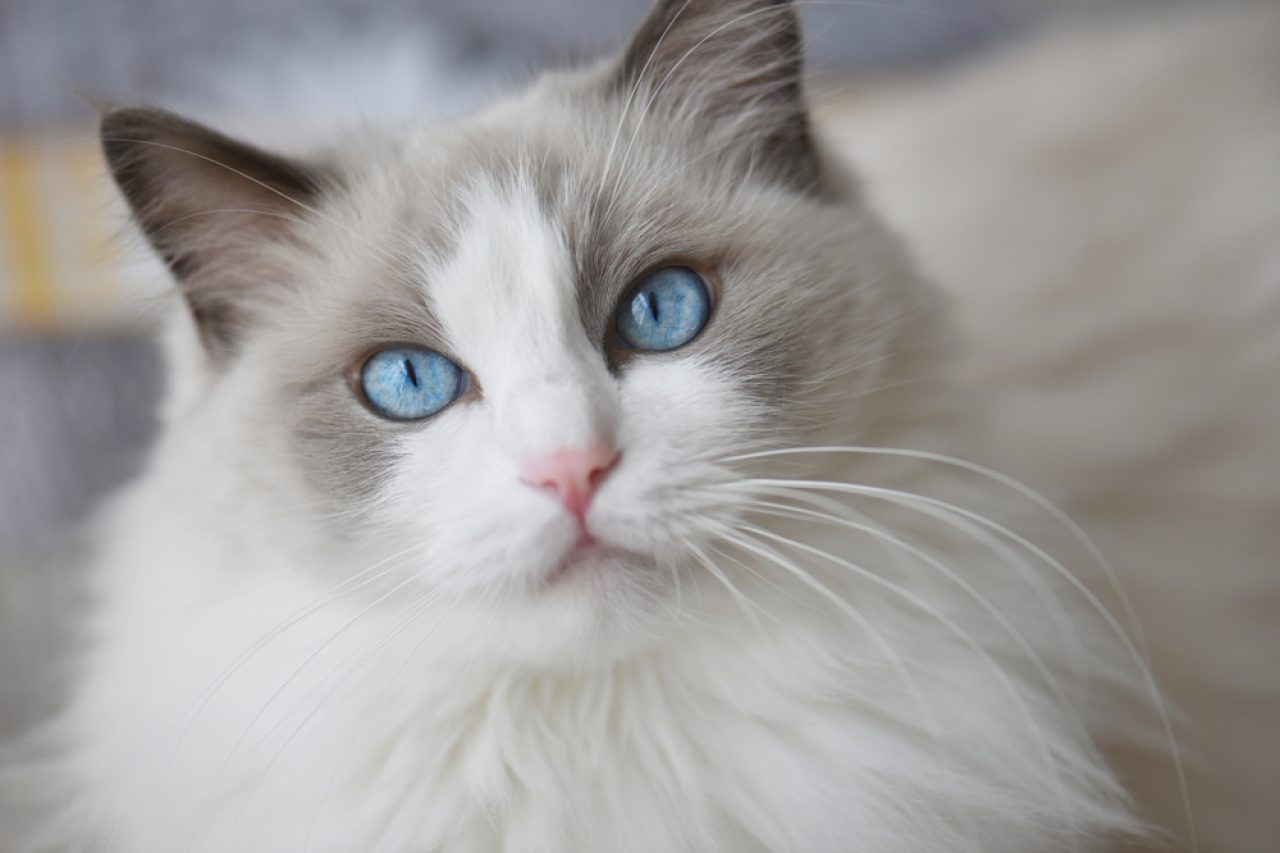
If you’ve just adopted your baby fluff, it’s not unusual that you’re wondering do all Ragdolls have blue eyes and if your furry friend’s eye color will change.
All Ragdoll kittens are born with blue eyes, but that doesn’t necessarily mean they’ll keep them. It might take 3 months before you start noticing the real color of your kitten’s eyes.
However, if even after 3 months you notice some eye-color changes, it might be a sign of something a bit more serious. In that case, make sure you take her to the vet just to be sure that everything is okay.
Ragdoll cats and eye conditions
Although they’re pretty healthy felines, Ragdolls can experience some eye issues, just like any breed. Some of the symptoms of eye problems in these furry giants include watery eyes, squinting, discharge, excessive blinking, pawing at the eye, and squinting.
On top of that, Ragdolls have an extra eyelid at the inner corner of their eyes, just like all cats do. In the case of infections, this third eyelid becomes a lot more noticeable. Let’s see what are some eye issues these wonderful felines can experience.
1. Eye infections
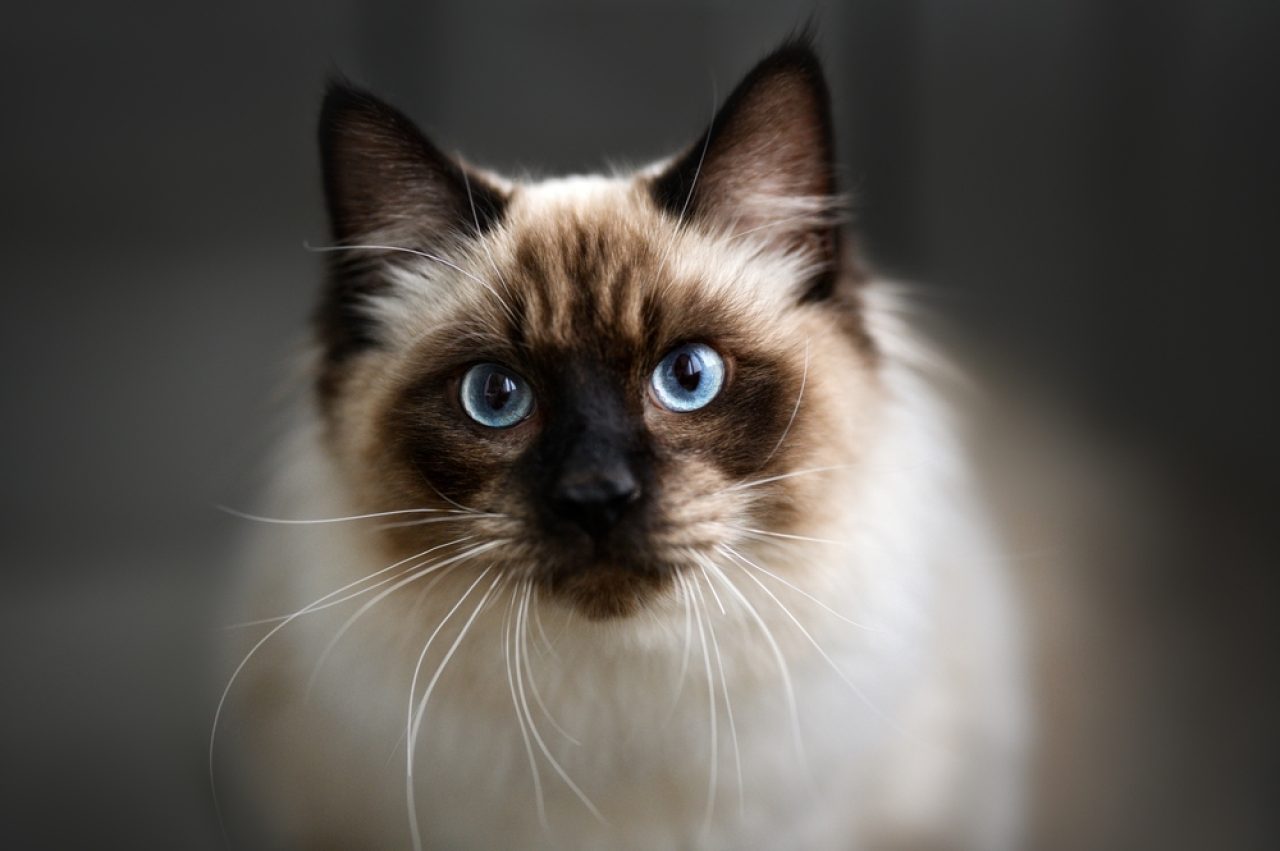
There are many things that can cause eye infections in Ragdoll cats, such as bacteria and viruses. These are often contracted from other felines, but your single kitty can experience them, too. The most common examples of bacterial infections are Mycoplasma and Chlamydia.
If you’re suspecting that your Ragdoll has an eye infection, look for the following symptoms:
- The third eyelid looks inflamed and it’s very noticeable,
- The white parts of your kitty’s eyes are now inflamed and red,
- There’s a sticky yellow or clear discharge.
If you notice any of these, don’t try to treat your fluff by yourself. Bacterial infections are usually treated with antibiotics, so make sure you take your fur baby to the vet. They’ll prescribe her the right ointment or eye drops.
In the case of viral eye infections, they usually simply run their course. However, depending on how severe the case is, the vet might treat them the same way they’d treat a bacterial infection. In the more severe cases, anti-viral medications may be required.
2. Allergies
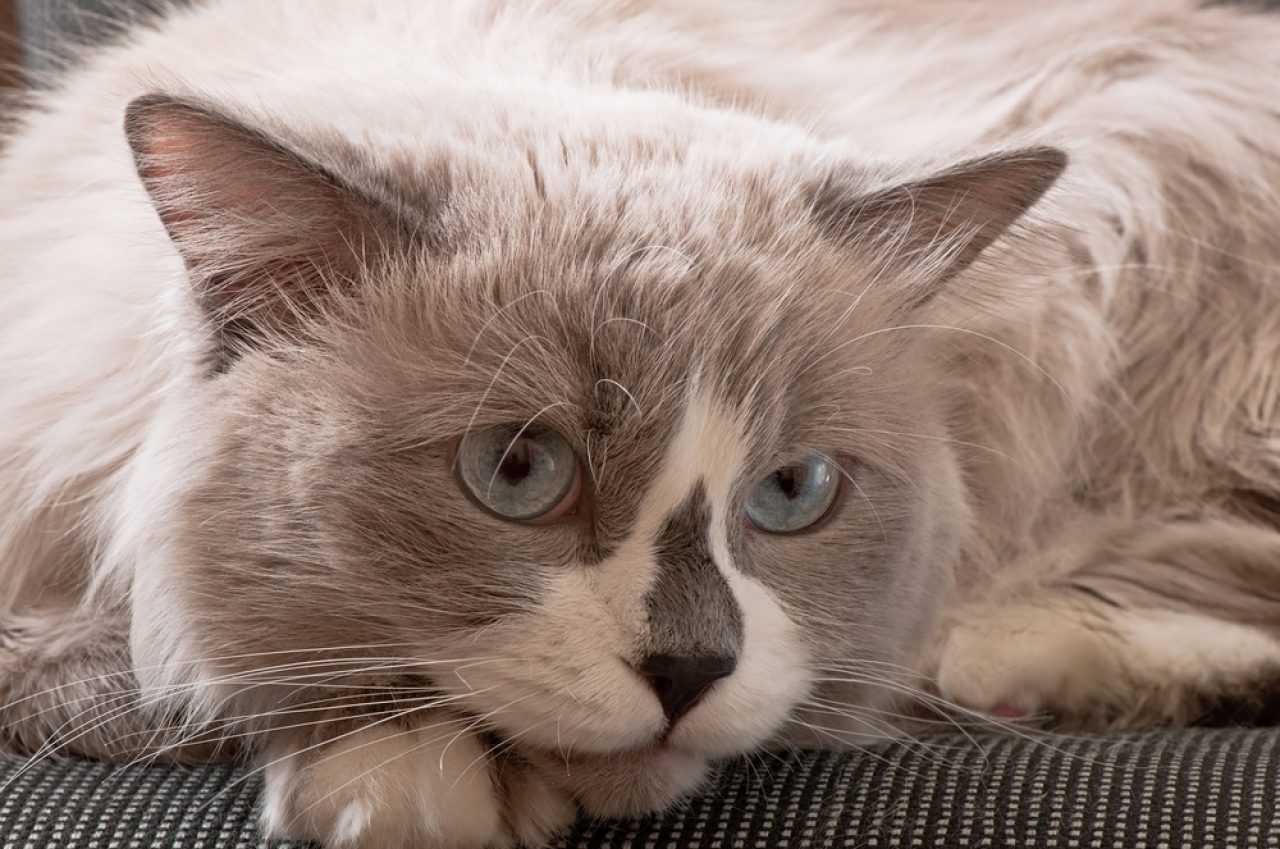
Just like humans, Ragdolls can also suffer from allergic reactions that often irritate their eyes. Think what hayfever does to you – that’s how allergies can affect your kitty.
Although allergies that cause itchiness and watery eyes are pretty uncommon, the allergens in your feline’s environment can have that effect on her.
For example, strong smells like perfume, cigarette smoke, dust, or cleaning chemicals can irritate your cat’s eyes. Pollen, flea-control products, mildew, and mold are also common allergens.
Pretty much anything that comes into contact with your feline’s eye can cause irritations. If your kitty has an allergy, she’ll show symptoms such as eye discharge, watery eyes, and redness in her cornea. It’s also not uncommon for cats to wheeze or sneeze when they’re having an allergic reaction.
Squinting and rubbing are all strong indicators that your kitty might be in pain. Since allergy symptoms are often very similar to those of a more serious illness, it’s crucial that you contact the vet as soon as you notice them. They might help you determine the cause of the allergy and prescribe an antihistamine topical treatment.
Another thing you should do is find the source. Think about the place you’re sharing with your kitty.
Are you using any new cleaning products, or is there a new fragrance you really like but it seems to bother your fur friend? Once you know what’s upsetting your fluff, it will be a lot easier to control her allergic reactions.
3. Keratitis
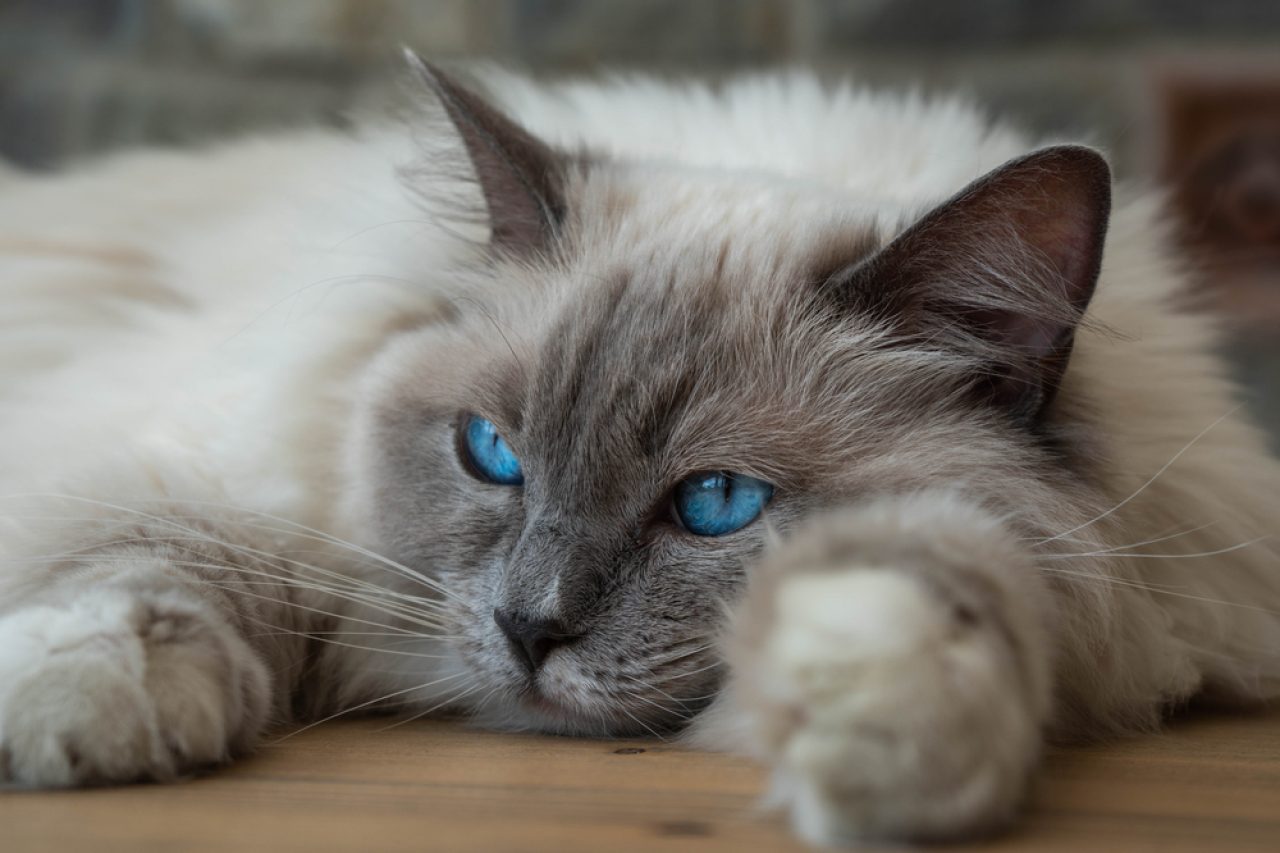
It’s important that you react as soon as possible if you see any changes in your kitty’s eyes. If you leave any underlying causes or inflammations untreated, they can lead to more serious issues, such as Keratitis.
This is the inflammation of the see-through cornea that covers your kitty’s pupil and iris. It can be pretty painful for your fluff and, if left untreated for a long period of time, it can lead to blindness.
Some of the symptoms of Keratitis in Ragdolls include:
- Swollen tissues around your fluff’s eyes,
- Excessive tearing, rubbing of the eye, and squinting,
- You might notice a discharge from your kitty’s eye, which can be green or white,
- Feeling like there’s something in their eye, which they might show by rubbing their eyes to get it out,
- Spasmodic blinking if the lights are too bright,
- Blurred vision, pain, and having a hard time keeping the eyelids open.
If you notice any of these symptoms, make sure you take your kitty to the vet as soon as possible. They’ll do all the necessary testing to find out what bacteria or virus is causing this. They’ll most likely prescribe some illness-fighting and pain-relieving strategy.
The treatment is purely based on the root cause, which is why it’s so important that your kitty’s examined by a vet. Some things that might cause Keratitis in Ragdolls:
- Abnormal tear production
- Trauma
- Eyelids diseases
- Eye surface being exposed to dust
- Eye being exposed to allergens and irritants
- Bacterial or fungal infections
- Parasites.
4. Iris discoloration
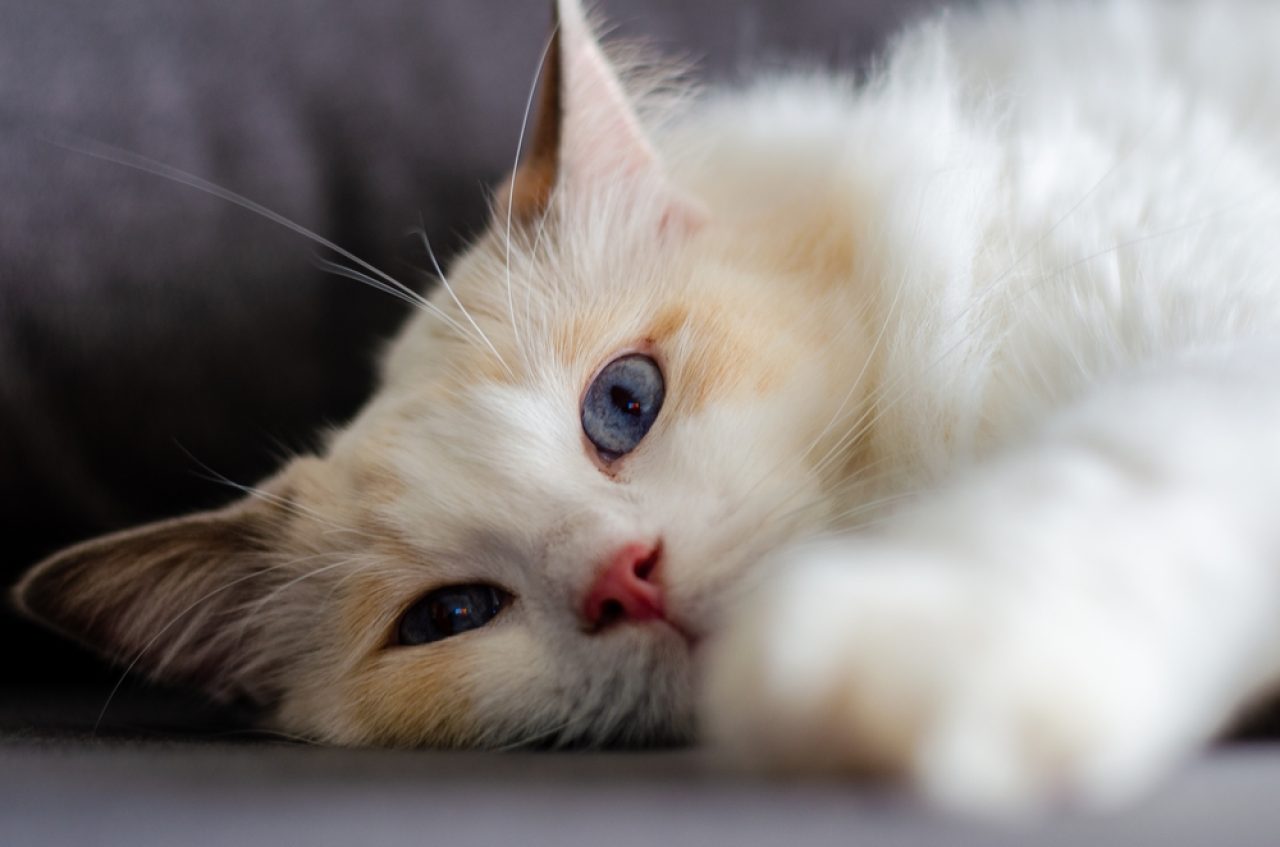
If you’re asking yourself do all Ragdolls have blue eyes because you’ve noticed some eye discoloration in your fluffy giant, you shouldn’t ignore it. This discoloration of the iris is known as iris melanosis. It’s a darkening caused by a sudden increase of cells that produce melanin.
Although iris melanosis isn’t harmful or dangerous, it can become malignant. Because of that, it’s important that your kitty’s eyes are closely monitored by the vet.
There are not a lot of symptoms besides small dark spots. They appear on the iris and then gradually spread. Since this condition can lead to some serious issues such as glaucoma or retinal detachment, it’s important that you consult a vet as soon as you notice the symptom.
In the worst-case scenario, this can lead to malignant cancer that can spread to other organs. Don’t worry, however. You’ll avoid this if you take your kitty to the vet right on time, as they’ll recommend the best course of treatment for your fluff.
5. Corneal ulcer
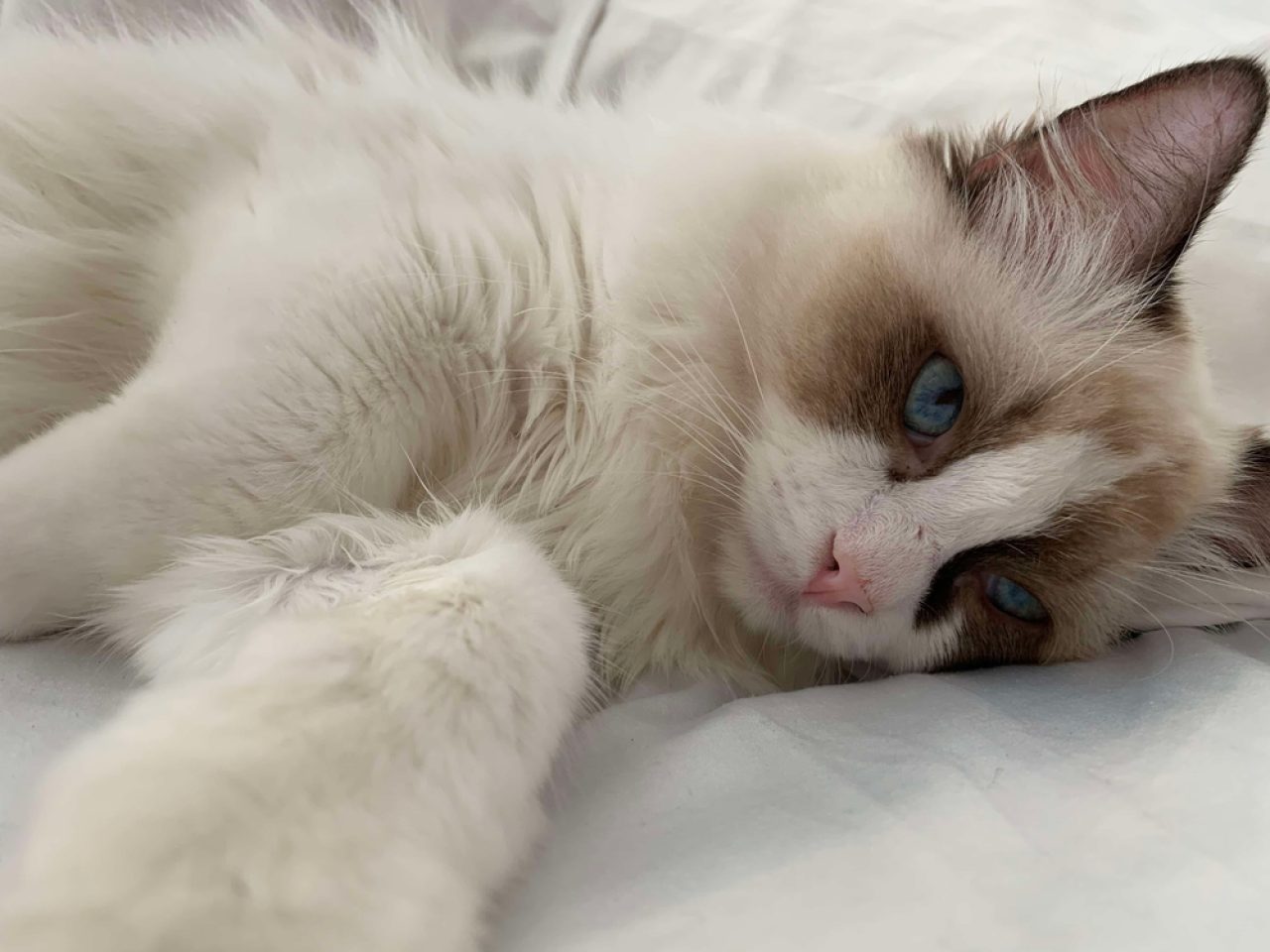
In cats, corneal ulcers are pretty common. Their severity is determined by how deep the injury is. Another pretty common cause of this condition is Feline herpesvirus. Unfortunately, corneal ulcers can be pretty painful for our dear fluffs, and they can change the appearance of their cornea.
This happens when the deep layers of the cornea are gone. Some other symptoms of corneal ulcers in Ragdoll cats are:
- Inflamed and red eyes
- Scratching
- Squinting
- Sensitivity to light
- Cloudy eyes
- Discharge.
The vets prescribe the treatment based on the root cause and the severity of the condition, which is why it’s important not to try to treat your kitty at home. The most common causes of corneal ulcers are:
- Scratches
- Foreign bodies
- Bacterial infections
- Hair growing out and rubbing your kitty’s eye.
6. Conjunctivitis
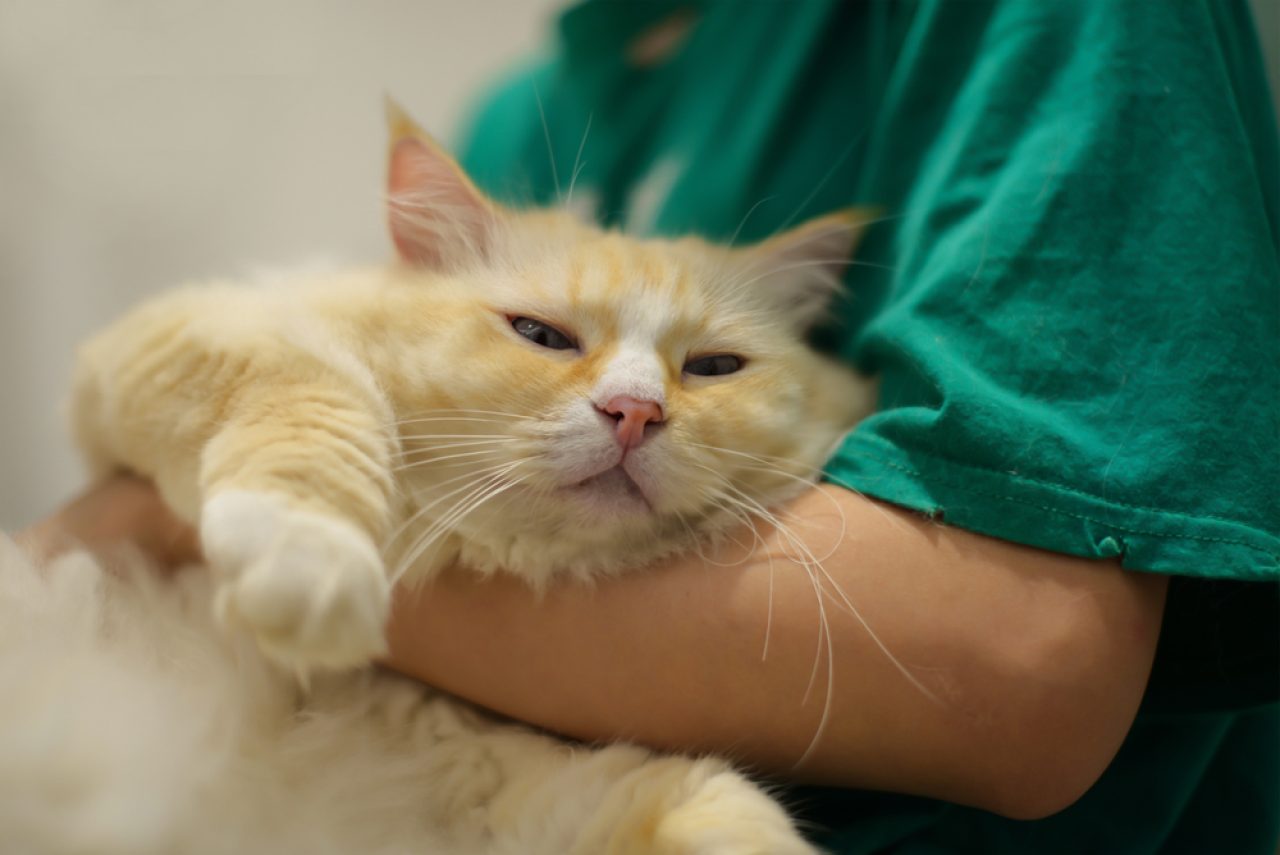
Just like humans, our feline friends can also suffer from conjunctivitis. It’s an eye condition in which the thin membrane on the inside of your kitty’s eyelids and the white part of her eye is inflamed.
This membrane protects the eye by bordering the eyelids. Because of that, its inflammation can be rather uncomfortable.
You’ll notice pretty quickly that there’s something wrong with your kitty’s eyes if she suffers from conjunctivitis. Some of the most common symptoms include:
- Excessive discharge, often yellow, greenish, or cloudy
- Excessive tearing from one or both eyes, depending on which ones are affected
- Red and irritated conjunctival membrane and the third eyelid
- Your kitty might be hiding from bright lights (photophobia).
The third eyelid is rarely visible in healthy cats. However, when they suffer from conjunctivitis, it grows red and puffy. Both eyes can be affected by this condition, or sometimes just one. Conjunctivitis in Ragdoll cats is often caused by:
- Viruses
- Fungi
- Bacteria
- Foreign bodies
- Allergens in their environment.
As it’s the case with other eye conditions, we don’t recommend self-medication for your feline. Conjunctivitis can be easily treated if you react on time and take your kitty to the vet. Depending on its progress, the vet might prescribe eye drops that will soothe your kitty’s irritated eye.

